A long horizontal wire AB, which is free to move in a vertical plane and carries a steady current of 20A, is in equilibrium at a height of 0.01m over another parallel long wire CD which is fixed in a horizontal plane and carries a steady current of 30A, as shown in figure. Shown that when AB is slightly depressed, it executes simple harmonic motion. Find the period of oscillations.

Let m be the mass per unit length of wire AB. At a height x
above the wire CD, magnetic force per unit length on wire AB
will be given by
Fm=μ02πi1i2x(upward)…(i)

Weight per unit length of wire AB is
fg=mg(downwards)
Here, m=mass per unit length of wire AB
At x=d, wire is in equilibrium, i.e.,
Fm=Fg,orμ02πi1i2d=mg
When AB is depressed, x decrease therefore, Fm will increase,
while Fg remains the same. Let AB be displaced by dx downwards.
Differentiating EQ. (i) w.r.t.x, we get
dFmdx=−μ02πi1i2x2dx=−μ02πi1i2d2dx⇒dFm=−(mgd)dx...(ii)
i.e, restoring force, dFm∝−dx
Hence, the motion of wire is simple harmonic.
From Eqs (ii) and (iii), we can write
dFm=−(mgd).dx(x=d)
∴ Acceleration of wire a=dFmm=−(gd).dx
Hence, period of oscillation
T=2π√∣∣∣dxa∣∣∣=2π=√|displacement||acceleration|
or T=2π√dg=2π√0.019.8orT=0.2s
Topper's Solved these Questions
- SOURCES OF MAGNETIC FIELDBOOK - CENGAGE PHYSICSCHAPTER - SOURCES OF MAGNETIC FIELDEXERCISE - Concept Exercise 2.1
35 Videos
- SOURCES OF MAGNETIC FIELDBOOK - CENGAGE PHYSICSCHAPTER - SOURCES OF MAGNETIC FIELDEXERCISE - Concept Exercise 2.2
10 Videos
- SOURCES OF MAGNETIC FIELDBOOK - CENGAGE PHYSICSCHAPTER - SOURCES OF MAGNETIC FIELDEXERCISE - single correct Ansewer type
12 Videos
- SEMICONDUCTOR ELECTRONIC : MATERIALS, DEVICES AND SIMPLE CIRCUITSBOOK - CENGAGE PHYSICSCHAPTER - SEMICONDUCTOR ELECTRONIC : MATERIALS, DEVICES AND SIMPLE CIRCUITSEXERCISE - QUESTION BANK
12 Videos
- THERMAL PROPERTIES OF MATTERBOOK - CENGAGE PHYSICSCHAPTER - THERMAL PROPERTIES OF MATTEREXERCISE - Question Bank
40 Videos
Similar Questions
A horizontal wire AB which is free to move in a vertical plane and carries a steady current of i2A, is in equilibrium at a height of h over another parallel long wire CD, which is fixed in a horizontal plane and carries a steady current of i1A as shown. Show that when AB is slightly depressed and released it executes simple harmonic motion. Find the period of oscillations.

View SolutionA long horizontal wire AB which is free to move in a vertical plane and carries a steady current of 20A,is in equilibrium at a height of 0.01m over another parallel infinitely long wire CD,which is fixed in a horizontal plane and carries a steady current of 30A.Show that when AB is slightly depressed, it executes simple harmonic motion.the period of oscillations is 1N seconds.then find the value of N.(Use π2=10&g=10m/s2)
View Solution
Knowledge Check
A long cylindrical wire carries a steady current which is uniformly distributed across its cross section. Which of the following is true?
AMagnetic field is zero at the centre.BElectric field is zero at the centre.CElectric field just outside the cylinder is zero.DMagnetic field just outside the cylinder is zero.A square loop, carrying a steady curren I is placed in a horizontal plane near a long straight conductor carrying a steady curren I1 at a distance d from the conductor as shown in figure. The loop will experience
 AA net torque acting downward normal to the horizontal planeBA net attractive force towards the conductorCA net repulsive force away from the conductorDA net torque acting upward perpendicular to the horizontal plane
AA net torque acting downward normal to the horizontal planeBA net attractive force towards the conductorCA net repulsive force away from the conductorDA net torque acting upward perpendicular to the horizontal planeA square loop, carrying a steady 1, is placed in a horizontal plane near a long staright conductor carryinf a steady current I, at a distance d from the conductor as shown in Fig. The loop wil experience
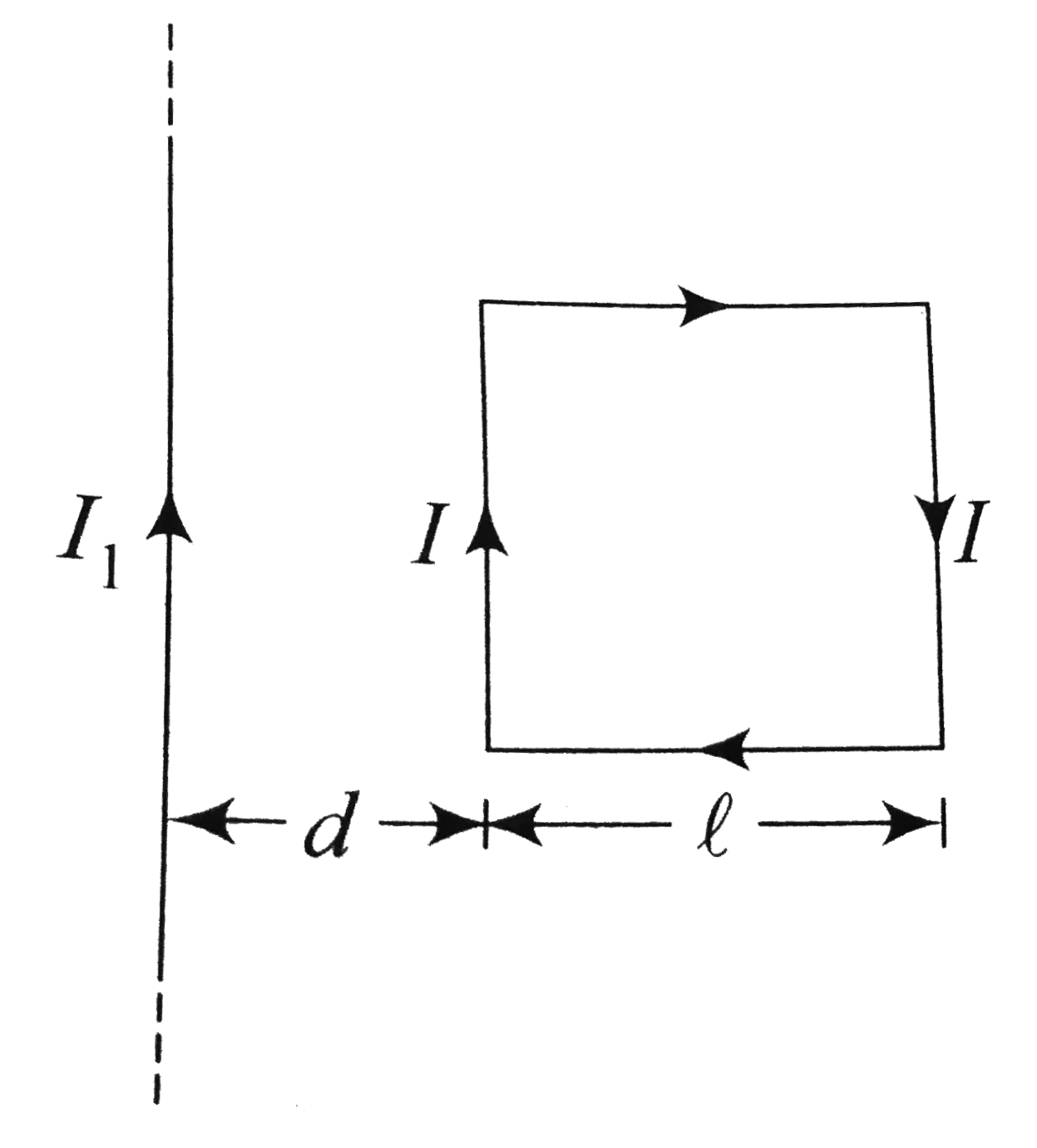 Aa net repulsive force away from the conductorBa net torque acting upward perpendicular to the horizontal planeCa net torque acting downward normal to the horizontal plane.Da net attractive froce towards the conductor
Aa net repulsive force away from the conductorBa net torque acting upward perpendicular to the horizontal planeCa net torque acting downward normal to the horizontal plane.Da net attractive froce towards the conductor
A horizontal wire AB of length T and mass 'm' carries a steady current I1 free to move in vertical plane is in equilibrium at a height of 'h' over another parallel long wire CD carrying a steady current I2 which is fixed in a horizontal plane as shown. Derive the expression for the force acting per unit length on the wire AB and write the condition for which wire AB is in equilibrium.
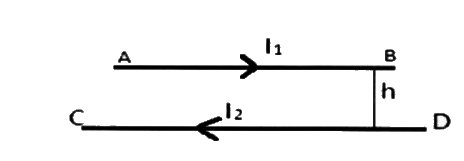
View SolutionFind the magnetic induction at point P due to a current carrying wire AB as shown in figure-4.31
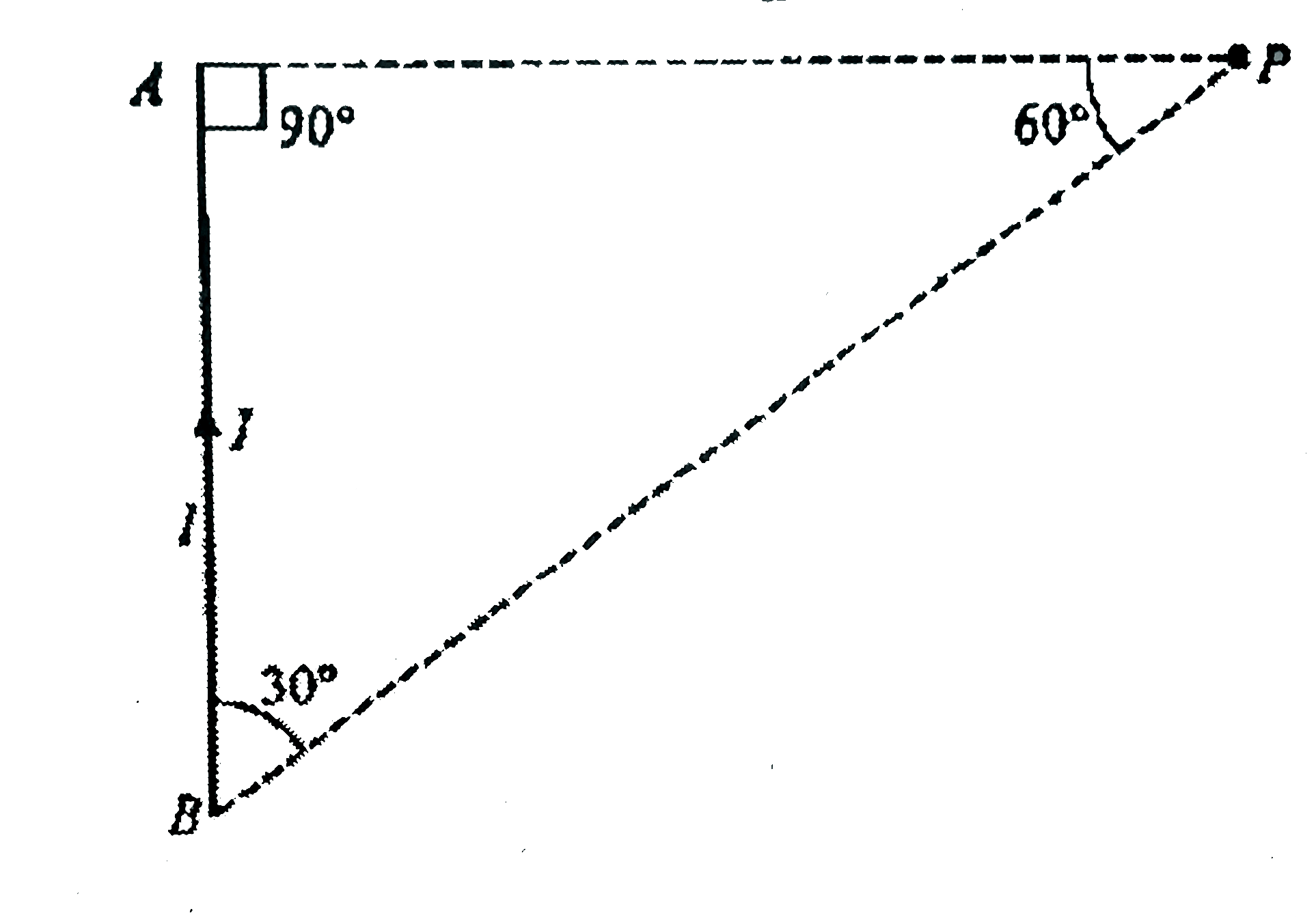
View SolutionWire carrying a study current and rod AB are in the same plane the rod move parallel to wire with velocity v then which end of the rod is at higher potential.
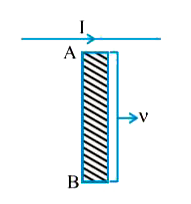
View SolutionTwo inflinitely long wires carrying current I, are bent as shown in the figure. Find the magnetic induction at point C.
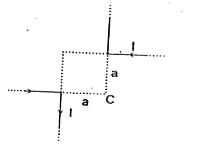
View SolutionA charge Q moves parallel to a very long straight wire carrying a current l as shown. The force on the charge is

View Solution
